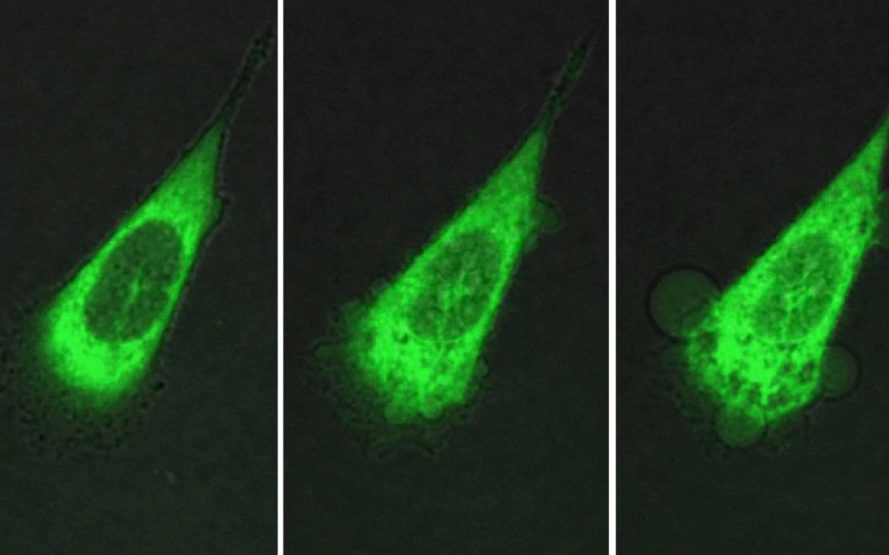Tiny new robots are proving to be life-saving tools in the fight against cancer. As first reported in the journal Nature, scientists at Durham University in England, in collaboration with researchers at Rice and North Carolina Universities in the United States, have developed nanomachines that are capable of drilling into cancer cells, killing them within minutes. These light-activated nanobots, the size of a molecule, move so rapidly that they can burrow through cell linings of cancer.

The researchers found that in order for the nanomachines to function effectively, they need to spin two to three million times per second in order to not be inhibited by objects (or what is known as Brownian motion, or the erratic movement of tiny particles in fluid.) When triggered by ultraviolet light, the nanobots begin to spin, allowing them to cut through cancercells either to destroy the cell or create space for the delivery of beneficial drugs. “These nanomachines are so small that we could park 50,000 of them across the diameter of a human hair, yet they have the targeting and actuating components combined in that diminutive package to make molecular machines a reality for treating disease,” said Dr. James Tour of Rice University. “For many years I never had envisioned the nanomachines being used medically, I though they were way too small, because they are much much smaller than a cell, but now this work has really changed my thoughts.”
Related: Nanotech Robots Travel Through Blood to Turn Off Tumor Cells
According to Dr. Robert Pal of Durham University, these micro cancer slayers may be well suited to target those cancers that are resistant to existing chemotherapy. “Once developed, this approach could provide a potential step change in non-invasive cancer treatment and greatly improve survival rates and patient welfare globally,” said Pal. After initial experiments on microorganisms and small fish are completed, the team will advance to rodent subjects, then eventually clinical trials on humans if prior results are positive.
Via Yahoo News
Source Article from http://feedproxy.google.com/~r/blacklistednews/hKxa/~3/H2OlpjEW4Yg/M.html
Related posts:
Views: 0
 RSS Feed
RSS Feed

















 September 5th, 2017
September 5th, 2017  Awake Goy
Awake Goy 
 Posted in
Posted in  Tags:
Tags: 
















